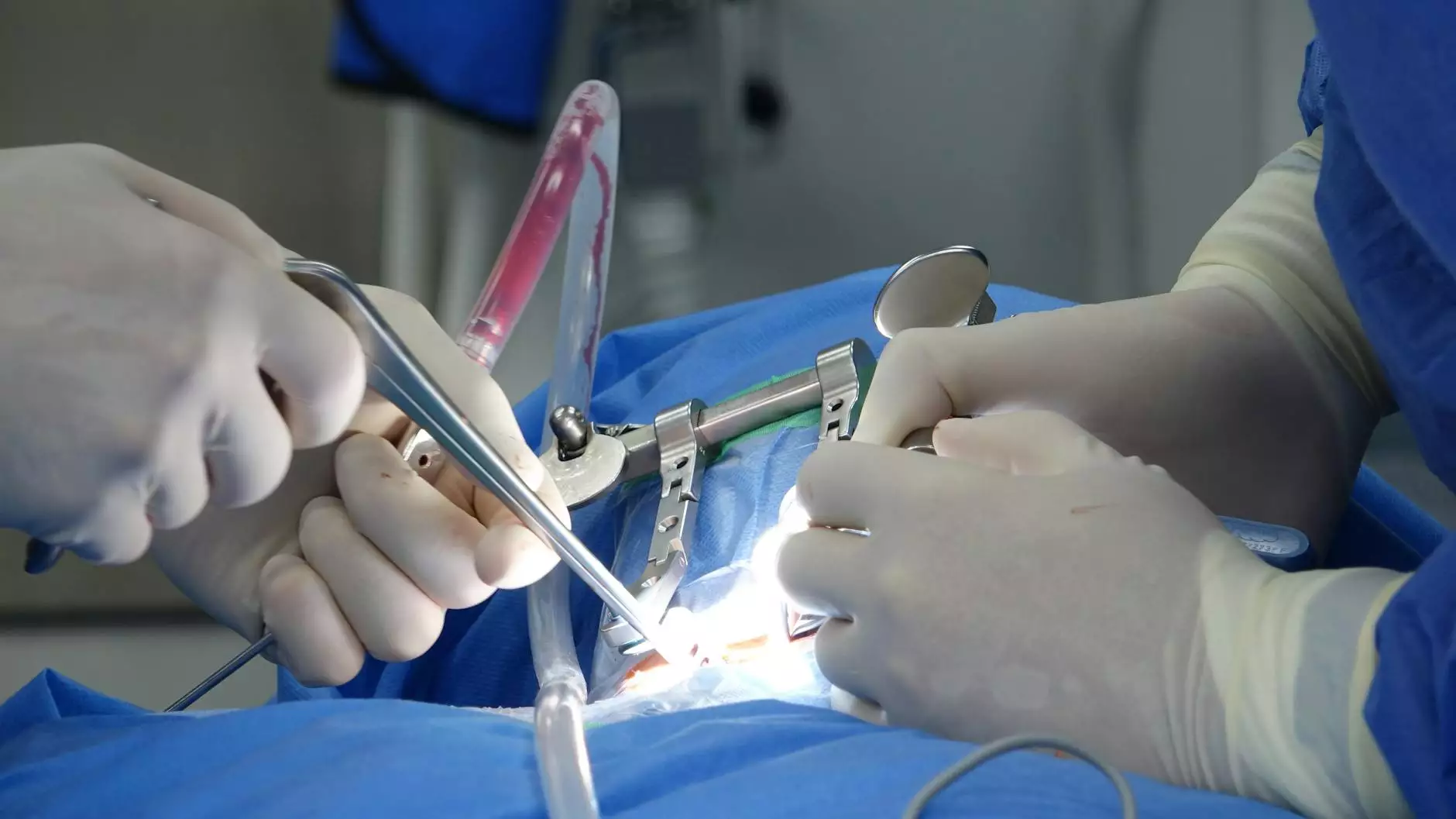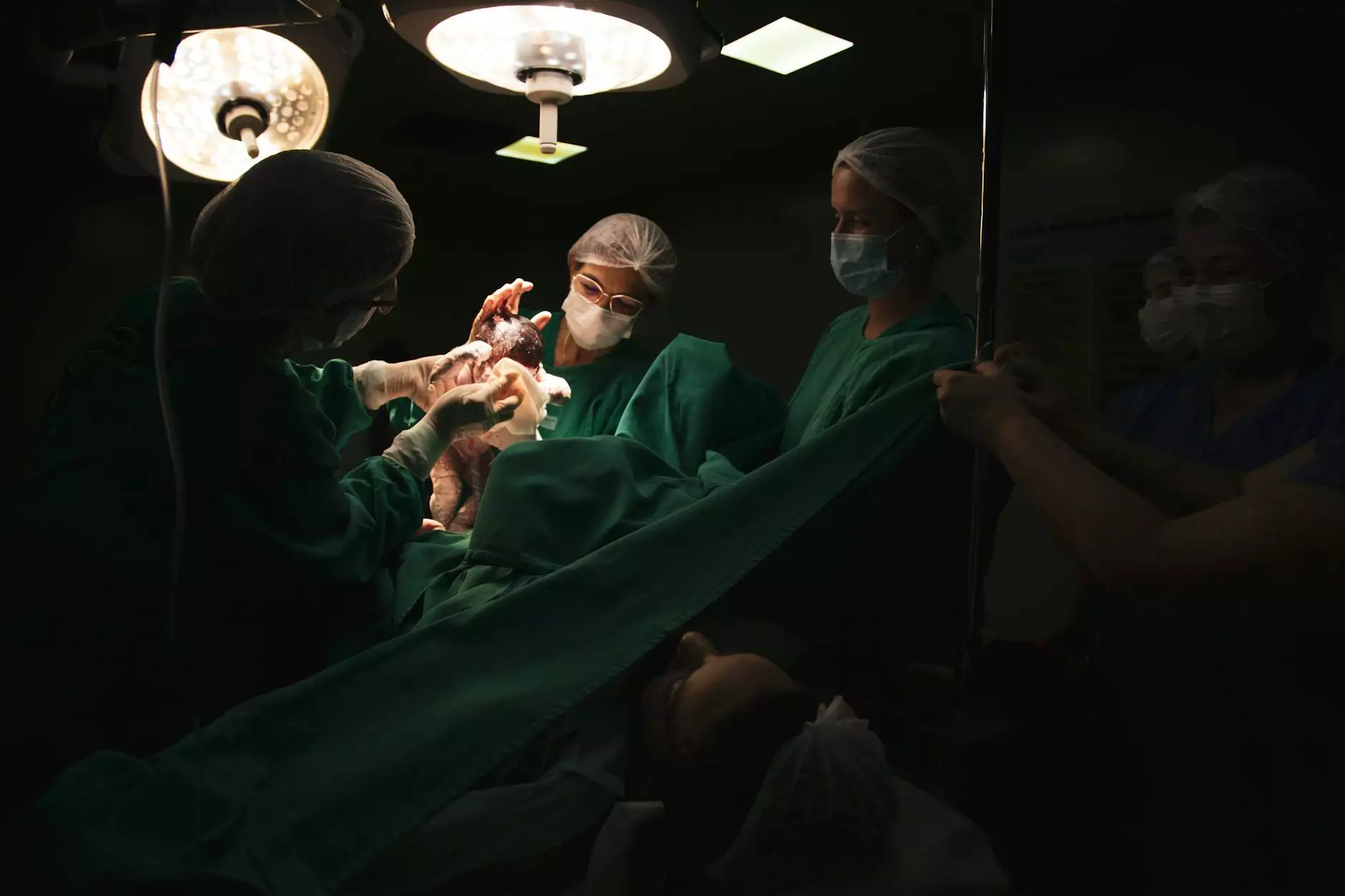Surgery of the Chest: Comprehensive Insights

The surgery of the chest encompasses a broad range of surgical procedures aimed at addressing various medical conditions affecting the thoracic cavity. This field is pivotal in treating diseases related to the heart, lungs, and other structures within the chest. Here, we provide an exhaustive guide on the subject, detailing types, techniques, benefits, risks, and recovery pathways.
What is Chest Surgery?
Chest surgery is a specialized area of healthcare dealing with surgical interventions within the thoracic region. It can involve procedures on the heart, lungs, esophagus, and other thoracic structures. The primary objective of surgery of the chest is to correct disease, dysfunction, or injury in this critical area of the body, thus promoting better health outcomes.
Types of Chest Surgery
There are several types of surgeries performed in the chest region, each targeting specific health concerns. Below are some of the most common procedures:
1. Thoracotomy
A thoracotomy is a surgical incision into the chest wall. This procedure grants surgeons access to the thoracic organs. It is often performed to gain access for other surgical interventions, such as lung resection or heart operation.
2. Lobectomy
A lobectomy involves the removal of a lobe of the lung. This procedure is typically performed when there is a tumor, severe infection, or chronic pulmonary disease affecting a specific lobe, allowing the remaining lung tissue to function efficiently.
3. Pneumonectomy
The pneumonectomy procedure involves the removal of an entire lung. It is often a treatment option for lung cancer or severe lung disease, necessitating careful consideration due to its extensive nature.
4. Mediastinoscopy
Mediastinoscopy is a minimally invasive procedure used to examine the mediastinum (the area between the lungs). Surgeons can take tissue samples for biopsies or assess the spread of cancer through small incisions.
5. Coronary Artery Bypass Grafting (CABG)
CABG is a type of heart surgery that improves blood flow to the heart. A surgeon takes a healthy artery or vein from another part of the body and connects it to the coronary arteries to bypass the blocked portions.
Indications for Chest Surgery
Numerous conditions make surgery in the chest necessary, including but not limited to:
- Lung Cancer: Removal of tumors or affected lung tissue.
- Chronic Obstructive Pulmonary Disease (COPD): Surgical treatment for severe cases.
- Cardiac Conditions: Bypass, valve replacement, and other surgical interventions.
- Trauma: Injuries sustained in accidents needing immediate surgical attention.
- Infections and Inflammation: Severe infections like lung abscesses or empyema.
Benefits of Chest Surgery
While the decision to proceed with surgery of the chest can seem daunting, the benefits are substantial when surgical interventions are indicated:
- Symptom Relief: Many patients experience significant relief from symptoms such as breathing difficulties, chest pain, and persistent cough.
- Improved Quality of Life: Following surgery, many individuals notice a marked improvement in their quality of life and ability to participate in daily activities.
- Increased Survival Rates: Surgical treatment can dramatically increase survival rates for conditions like lung cancer and heart disease.
- Minimally Invasive Options: Many chest surgeries are performed using minimally invasive techniques, which can reduce recovery times and complications.
Risks Associated with Chest Surgery
Like any major surgery, chest procedures carry risks. Understanding these is crucial for informed decision-making:
- Infection: Postsurgical infections can occur at the incision site or internally.
- Blood Clots: Surgery can increase the risk of blood clots, necessitating preventive measures.
- Anesthesia Risks: Reactions to general anesthesia can present complications, although they are rare.
- Respiratory Complications: Patients may experience breathing difficulties post-surgery that require management.
The Role of the Medical Team in Chest Surgery
The success of surgery of the chest significantly hinges on a well-coordinated medical team. Key members include:
1. Thoracic Surgeons
These specialists perform the surgical procedures and make critical decisions regarding the approach and techniques used. Their expertise is paramount in achieving optimal outcomes.
2. Anesthesiologists
Anesthesiologists are responsible for the patient’s wellbeing during surgery, managing pain and sedation, and ensuring safety throughout the procedure.
3. Surgical Nurses
Surgical nurses provide critical support in the operating room and assist in patient care pre and post-surgery.
4. Respiratory Therapists
These professionals help manage respiratory issues pre and post-operation, crucial for patients undergoing lung-related surgeries.
Recovery After Chest Surgery
Recovery from surgery of the chest can vary significantly based on the procedure performed but generally involves:
1. Hospital Stay
Patients may stay in the hospital for several days for monitoring and management of post-surgical care. During this period, medical staff track recovery closely to identify any complications early.
2. Pain Management
Effective pain management strategies are crucial for recovery. This may involve medications and physical therapy to enhance healing.
3. Physical Rehabilitation
Rehabilitation specialists will often work with patients to restore strength and functionality. Exercises are designed to improve lung capacity and general physical endurance.
4. Follow-Up Appointments
Regular follow-up visits with the surgical team are essential to monitor recovery progress and make any necessary adjustments to the treatment plan.
The Future of Chest Surgery: Innovations and Advancements
The field of surgery of the chest continuously evolves, driven by advancements in technology and techniques. Innovations include:
- Robotic Surgery: This technology allows for minimally invasive surgeries with enhanced precision and decreased recovery times.
- Enhanced Imaging Techniques: Improved imaging enables better pre-surgical planning and intraoperative navigation.
- 3D Printing: Customized surgical tools and models developed using 3D printing technology are starting to enhance planning and surgical execution.
- Better Anesthesia Protocols: Innovations in anesthesia ensure that patients experience minimal pain and higher safety profiles during surgery.
Conclusion
In conclusion, surgery of the chest is a complex yet essential aspect of modern medicine that provides hope and relief for countless patients with thoracic conditions. As healthcare continues to advance, understanding the scope, benefits, and innovations in chest surgery is critical for patients and their families. At Neumark Surgery, our commitment to offering comprehensive and high-quality care solutions ensures that patients receive the best support before, during, and after their surgical journey.
For more information about our services or to schedule a consultation, visit us at neumarksurgery.com.









